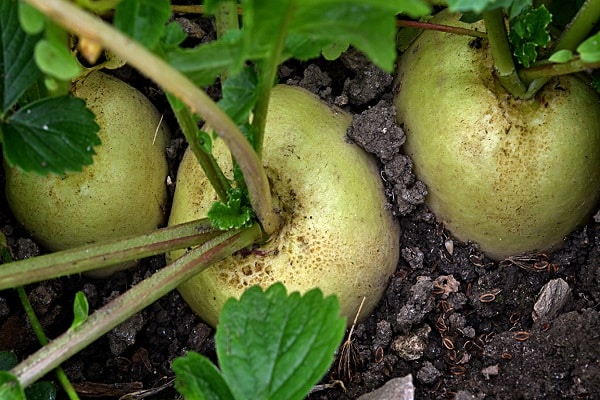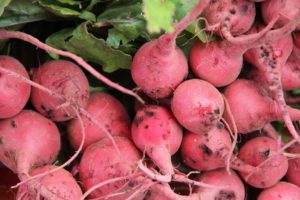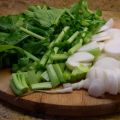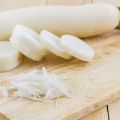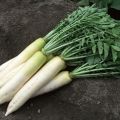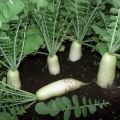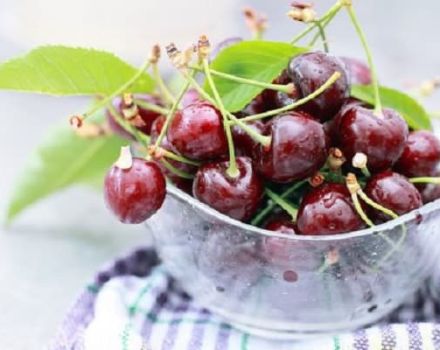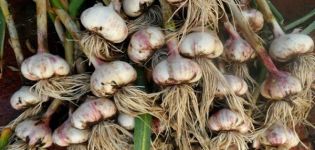Description of the Daikon Sasha variety, its characteristics, cultivation and care
Gardeners are increasingly occupying the ridges with Sasha daikon. This Japanese radish attracts with its taste and yield. It is distinguished from black by increased juiciness, lack of bitterness. Root crops grow large. Summer residents get a big harvest from one ridge.
In Japan, scientists have conducted a study on daikon. Planted on contaminated land, the root crop remained free of isotopes. Radish does not accumulate nitrates.
Sasha is a product of Russian breeders. It is suitable for growing in temperate climates. 2 crops can be grown on one ridge per season.
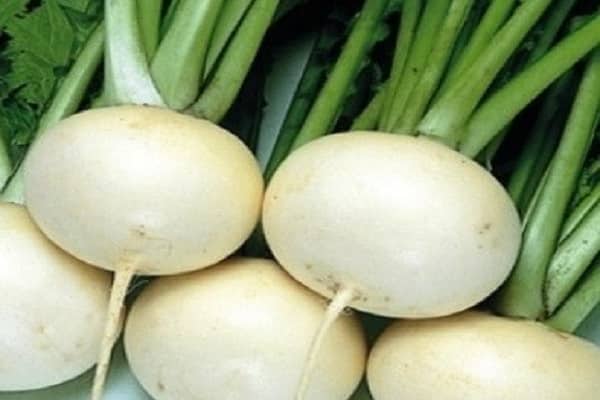
Characteristics and description of the variety
Sasha variety is a godsend for gardeners. It differs from its Japanese counterparts in its ability to produce crops in almost any climatic zone.
The radish was created by the VNIISSOK agronomists. Named for Alexander Agapov. Description of the variety:
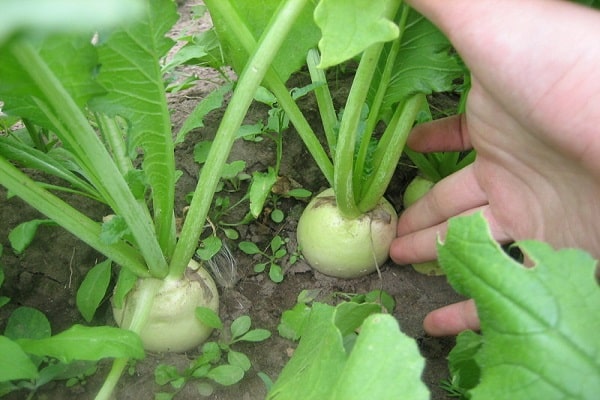
- a member of the Cruciferous family;
- rounded root vegetable, slightly elongated, with a “tail”;
- the color is white, with a slight yellowness;
- the pulp is juicy, aromatic;
- the consistency is dense, elastic;
- the taste is sweet and spicy;
- the skin is dense;
- protrudes above the soil surface by 1/3;
- the mass of the radish is from 200 to 400 g.
Simply pull the root crop out of the ground: just pull and twist the tops a little... It is convenient: the crop is not damaged during harvesting.
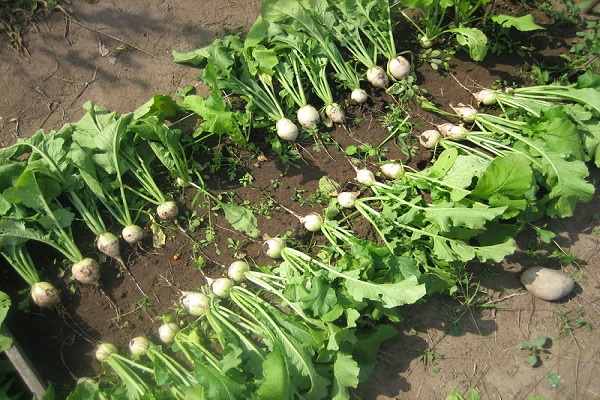
The characteristic of the radish resembles the listing of the advantages:
- Early ripening variety: ripens 35-40 days after germination.
- Differs in resistance to bacteriosis.
- Does not throw out peduncles (subject to agricultural technology).
- Yields a harvest in a friendly and even manner.
- Has a pleasant taste: almost no bitterness is felt.
- The roots are leveled.
- The culture is cold-resistant.
- Convenient to use: small size allows you to consume whole radish.
- The dense skin provides excellent transportability.
Ogorodnikov is frightened off by low keeping quality: after a month, the roots shrink and lose their juiciness.

Seed selection
Gardeners should carefully choose planting material. When planting in small beds, it is recommended to buy seeds from trusted manufacturers. Their products are subject to soil testing. There is no need to prepare seeds for sowing.
Some gardeners tend to use their own planting material. To do this, sow Sasha early: along with radish. The radish will give an arrow. It should be tied to a peg, covered with gauze pods (from premature rash). Then thresh the ripe beans and keep in a paper bag in a dry, dark place. When stored properly, seeds germinate for 8 years.
Such material must be prepared for planting: check for germination, disinfect, stimulate. It takes quite a while.

Site selection for planting
To place the daikon, you need to choose a well-lit area. The soil should be loose, air and moisture permeable. The ridge should be fertilized before planting. On poor soils, radish produces small roots with coarse pulp.
Sasha does not tolerate stagnant water, but loves humid areas. The gardener is advised to think about the predecessors of the radish. The best are tomatoes, onions, garlic, beans, peas. It is not recommended to plant Sasha after radish, turnip, cabbage, radish.
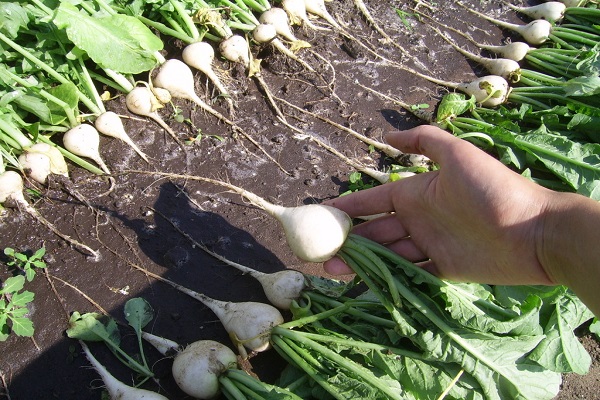
Landing dates
Sasha's early maturity allows him to be planted twice a season. The first planting is recommended in the spring, after the soil warms up to 4 degrees. The second stage begins after daylight hours begin to decrease. This is usually July-August.
When sowing on the same plot, it is recommended to plant siderates after the first harvest. White mustard grows quickly. It will restore fertility and loosen the soil. After the tops have grown by 10 cm, the greens are embedded in the ground during digging.
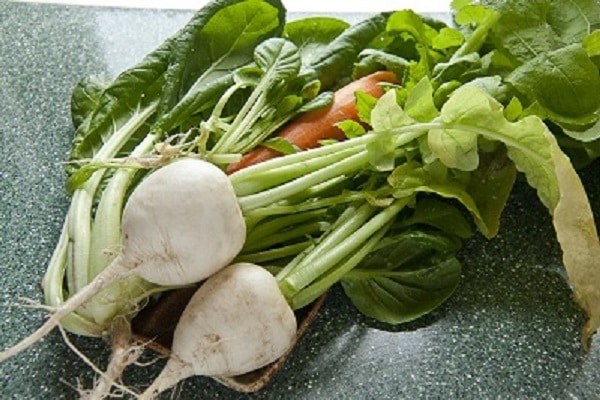
For each location, the landing dates are determined individually. The gardener should consider:
- short daylight hours (the radish will not give a peduncle);
- a slight difference between day and night temperatures (you get a juicy, tender pulp).
Compliance with the planting dates will provide the gardener with marketable root crops, save the plants from damage by the cruciferous flea.
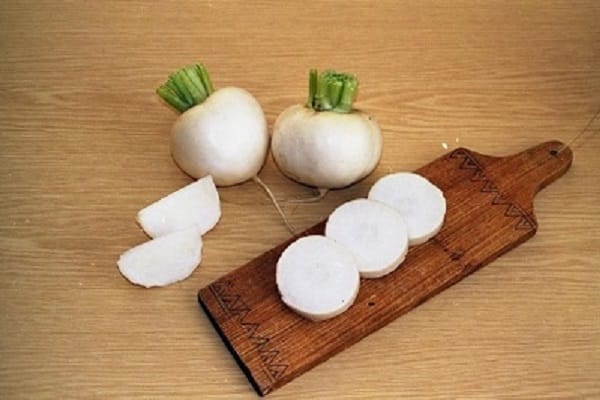
Daikon care rules
Breeders promise to get a high yield only if agricultural technology is followed. Gardeners are advised to follow the advice of agronomists.
Watering
After sowing, the gardener should keep the soil moist until shoots appear. This can be achieved by covering the ridge with a white non-woven fabric of the lowest density. After germination of seeds, lutrasil, agrospan or spunbond are recommended to be removed.

Sasha does not tolerate fluctuations in soil moisture: the taste of the root crop deteriorates. The pulp coarsens, becomes more bitter. Water should be abundantly every 7-10 days. In case of prolonged precipitation, it is recommended to cover the planting with a film.
Do not forget about "dry" irrigation - loosening. After moistening, it is imperative to go through the aisles with a hoe. This will break the crust on the soil surface and allow air to enter the roots.

Weeding
Sasha cannot stand shading, especially at the stage of regrowth of the first true leaves. The ridges must first be freed from weeds. An excellent result is given by the autumn planting of green manure plants: oats, rye. Their roots destroy perennial weeds. It is recommended to let the tops grow 10 cm and dig up.
When growing tops, you need to monitor the appearance of harmful plants. The aisles must be free. For large areas, it is recommended to use flat cutters or weelers.
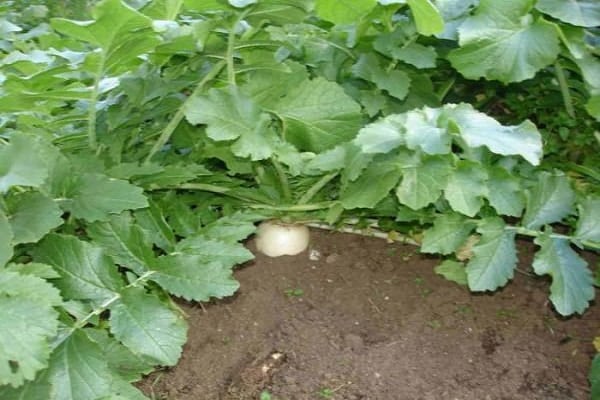
Fertilizer
Daikon needs fertile soil. Before sowing, the ridges should be prepared: add fully matured organic matter (humus or compost, a bucket per square meter). And after 3-5 days add a mineral complex (potassium: phosphorus) according to the manufacturer's instructions.
After the first thinning, it is recommended to water the seedlings with a solution of fermented grass (1 liter of infusion per 8 liters of water). 7 days after planting, dust with sifted oven ash.
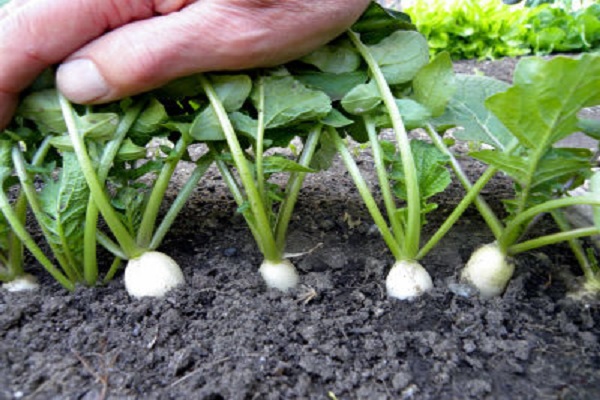
Diseases and pests
Daikon is affected by fungi. For prevention, it is recommended to follow the rules of cultivation. When signs of a mosaic appear, the plant must be dug up and burned, the soil must be shed with a solution of potassium permanganate.
Sasha is the favorite food of the cruciferous flea. It is not recommended to use insecticides: the ripening period is short. Some gardeners dust the plantings with ash.An excellent result is given by compact planting of friendly crops: marigolds, onions. These plants repel pests.
Covering the plantings with lutrasil or spunbond will help protect the plants from the pest before germination.
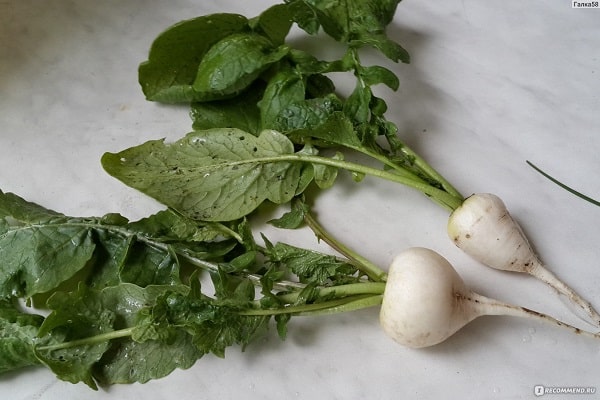
Harvesting and storage
Sasha radish is ready for use in the third week after seed germination. The upper (aboveground) part of the root crop can be judged on its size. The plant is carefully removed from the soil and eaten. It is not recommended to overexpose the daikon in the ground: the pulp coarsens, becomes fibrous and tasteless.
A dry day is suitable for cleaning. When planting late in the summer, you should not wait for frost: the taste of root vegetables spoils.
The collected daikon is cleaned from the ground, the tops and tail are cut off. Then they are folded into a plastic bag and placed open in a fruit pot. Sasha is not stored for long: 30 days.
